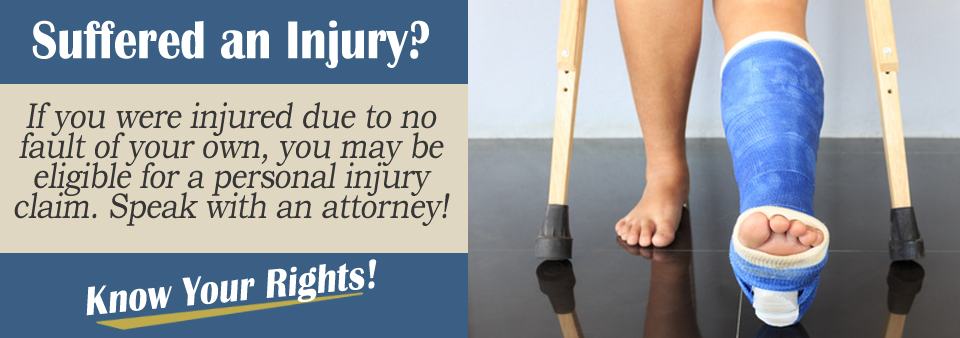If you have been involved in a merging accident, you can pursue a personal injury claim against the other driver to recover compensation for your damages. However, to have a successful personal injury claim, you must prove that the other driver is at fault and liable for the damages.
When you are merging lanes, it is usually the responsibility of the driver who is merging into the other lane of traffic to match the speed of other traffic and ensure there is adequate room to move into traffic between the other vehicles.
However, both drivers have a responsibility to ensure that the merging happens safely. If a driver purposely tries to prevent another car from merging by speeding up, he or she could be found at fault for the crash.
State Laws Come Into Play
States set their own traffic regulations, but they are usually rather similar when it comes to merging. The person who is merging should give right of way to the traffic on the through route.
If a driver is merging where there is a traffic control device or sign, the driver must obey the sign or signal. If a driver is aggressive, inattentive, or distracted, he or she could be at fault for the crash that results.
Don’t panic and stop in the merge lane, instead, try to find a spot in between cars and try to match speed and then aim for the open spot. If you stop on the merge lane, you could be hit by the car behind you because that driver is also looking for a spot to merge over.
Determining Fault
When a driver is merging, he or she must use a signal, so other drivers will know where he or she is heading. Failure to signal is a violation of traffic laws and could be a negligent act that contributes to or causes a crash. Showing that a driver changed lanes without signaling could help prove fault.

As an example, if you were merging into traffic and the other driver merged into the same lane where you were merging without signaling he or she was going to move over, that could show fault.
Also, witnesses who saw the other driver make an illegal maneuver or act aggressively or speed up could also help prove that the other driver was at fault for the crash. The location of the vehicles, the point of impact, and even the damage can help the officer and the insurance investigator determine who was at fault for the crash.
What To Do At a Merging Accident
If you have been in a merging accident, and you believe that the other driver was at fault for the crash, you may be able to pursue a personal injury claim if you can gather enough supporting documentation and convincing evidence.
Always stay on the accident scene and call the police. You will need an accident report to get your claim underway and to show that you suffered damages in the crash.
Take photos of the accident scene, so you can show the point of impact and the damages that your vehicle suffered. The more supporting documentation and evidence that you have, the more likely you are to show that the other driver was at-fault and is liable for your damages. Also, ask any witnesses to provide statements regarding what they saw and what happened.
If you aren’t at fault for the crash, you may be able to recover compensation through a personal injury claim against the driver who is to blame for the accident that caused your damages. An auto accident that happens when someone is merging can lead to serious injuries and various damages. You will want to make sure you determine the extent of your losses and damages, so you can ask to be compensated for all of them in your personal injury claim.
If there are video cameras in the area, they may have caught the accident on video. Surveillance videos, traffic cameras, and traffic cameras could be subpoenaed as evidence to support your auto accident injury claim. You should establish medical care right away, so be sure to keep all medical records and medical bills.
Common Damages After a Merging Accident
You will want to claim all the damages you suffered in the merging accident in your personal injury claim. You could suffer long-term from the crash, and your damages may add up quickly. Here is a rundown of some of the more commonly claimed damages after a merging accident:
- Property damages – This includes the damages to your vehicle. Get a written repair estimate, photos of the damages, tow bills, and rental car receipts to figure up this total.
- Medical expenses – If you were injured in the accident, you should establish medical care right away. Keep copies of all medical bills – physician visits, hospital bills, physical therapy, prescriptions, medical devices, surgeries, and anything else related to medical care.
- Pain and suffering – If you have medical bills, you have pain and suffering. Your personal injury attorney will help you come up with the dollar amount of your pain and suffering claim. A multiplier from 1 to 5 is used with your medical expenses total to determine your pain and suffering.
- Lost wages – You will have lost wages while you are recovering from your injuries. Add up any past, present, and future loss of earnings. Your lawyer will help you determine how your earnings are affected.
- Mental anguish – If you suffer from stress, anxiety, or depression because of the accident, your lawyer may help you include these damages in your claim.
- Permanent scarring and disfigurement – If you have permanent scars or lifelong injuries, you may be able to recover compensation for permanent scarring and disfigurement.
To get your claim underway, you will need to send a demand letter. In this demand letter, you will need to state the facts. Explain what happened, where it happened, when it happened, and why it happened. Detail why you believe the other driver is at-fault and why they are liable for the damages that you suffered.
You should provide supporting evidence, such as medical bills, medical records, photos of the accident scene, witness statements, repair estimates, and any other supporting documentation and evidence that you can provide.
You will need to itemize all your damages and then add up them up to come up with the total that you want to receive in a settlement to take care of your losses. You should have in mind the minimal amount that you are willing to accept, and always be ready to negotiate with the insurance company. They may make a counteroffer or completely reject your claim.
Your personal injury attorney will have strong negotiation skills and he or she will aggressively pursue the claim for you, looking out for your interests and working to see that you are treated fairly when a settlement is reached. The auto insurance company will have legal representation, so you should make sure you have representation as well.
How To Prevent Merging Accidents
Drivers should be attentive at all times and abide by traffic laws. We all have a duty or a responsibility to drive safely and protect others from harm. When you are driving, you should be careful not to tailgate. You want to leave enough room between you and any vehicles to avoid a rear-end collision.
When you are merging, you should do a double take to make sure you are properly judging space and speed. Don’t merge until you are sure it is safe to do so. Always use turn signals, and merge gradually, always avoiding abrupt movements.
Use extra care to make sure you don’t cut other cars off. If you aren’t the merging car, then don’t go too fast or try to keep other cars from merging because it will cause a crash.
Consult With A Personal Injury Attorney
If you have been involved in a merging accident, you should consult with a personal injury attorney. An accident injury lawyer will help you determine how to prove the other car is at fault in a merging accident, so you can recoup compensation for your damages.
Personal injury attorneys have strong negotiation skills and can work with the insurance companies. The insurance company will likely have legal representation, so you want to make sure you have someone looking out for your interests. With an attorney standing up for you and gathering the supporting evidence and documentation, you are much more likely to be compensated for your damages.
Personal injury lawyers work on a contingency basis, so they are not get paid until you are compensated for your losses. Schedule your free case evaluation today!
